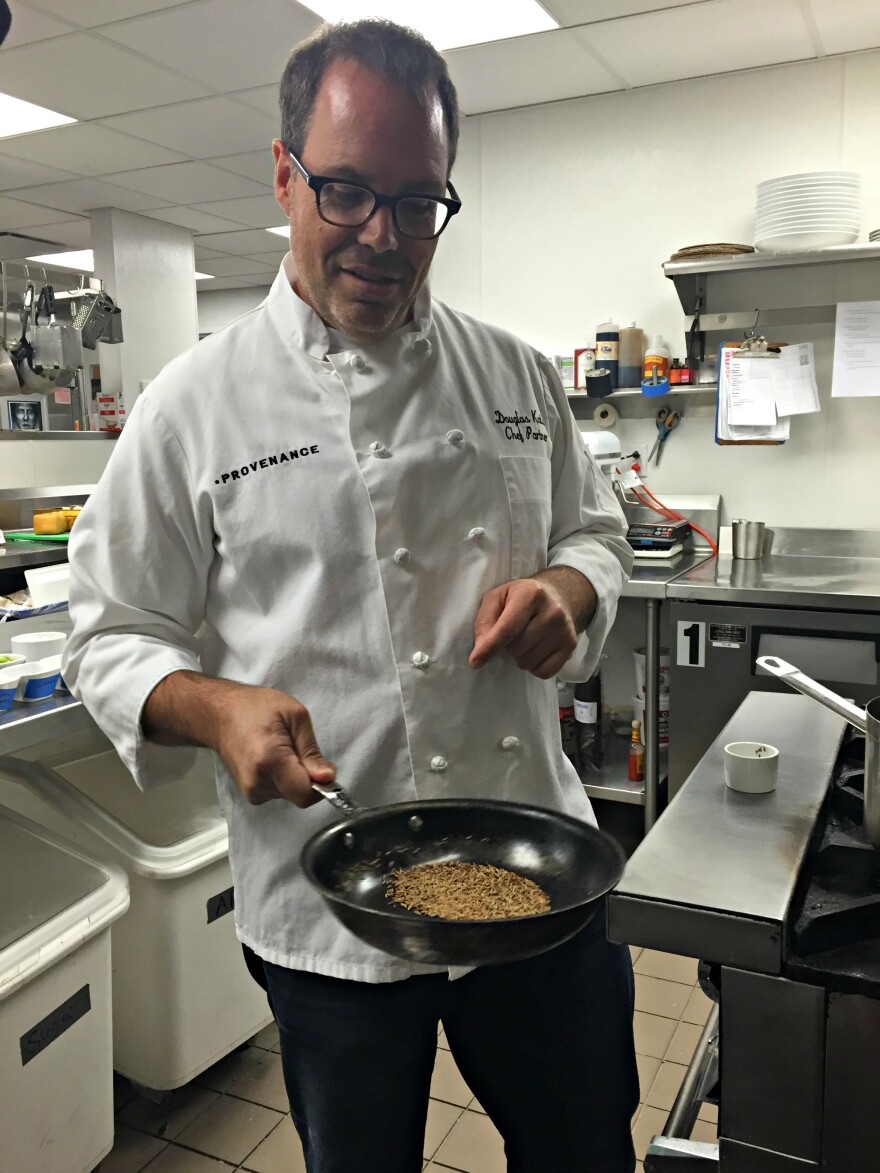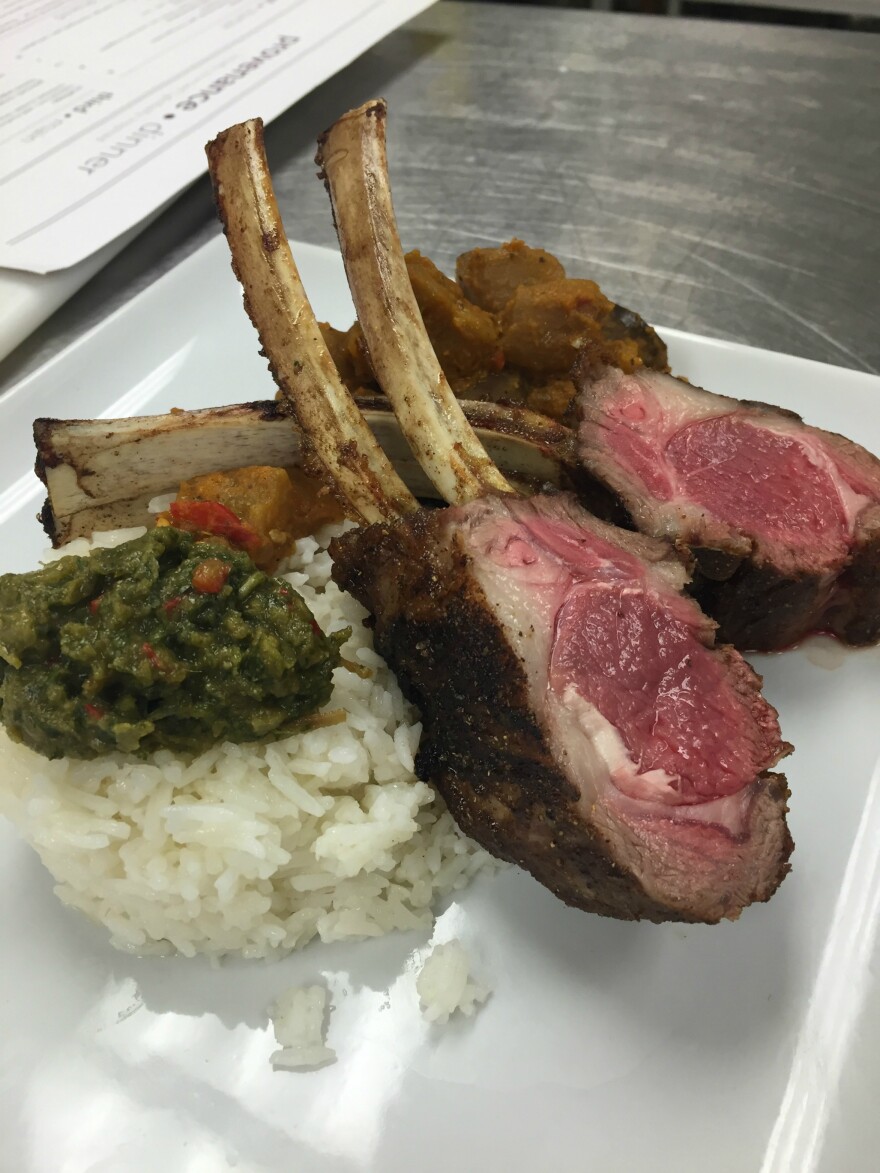The Cleveland Museum of Art is offering a look at the priceless art treasures of Indian emperors. Plus, a chance to feast like one. WKSU’s Vivian Goodman has the story in this week’s Quick Bite.
The special exhibition “Art and Stories from Mughal India” is free to the public in celebration of the Cleveland Museum of Art’s centennial year.
The Mughals governed India for 300 years from the 1500s until the start of British colonial rule. Curator Sonya Rhie Quintanilla says they were fabulously wealthy. “The English word 'mogul,' like movie mogul, is the same as this word for the Moghul Empire. "

Mughals prized the arts, including culinary art
They were a cultured lot, putting a high value on art, literature, and architecture. A Moghul built the Taj Mahal.
And Chef Doug Katz says they were foodies, too. “Eating was a huge part of the day. It was a huge part of the life experience. The aromas, the blending of spices. There was so much I think that was integral to their day.”
In recognition, Katz has designed a special menu at Provenance, the museum’s restaurant, to accompany the exhibition of 100 Mughal paintings.
As a complement to the paintings, Moghul costumes, jewelry and textiles are also displayed, including a long, elaborate carpet on the floor of the exhibition’s first gallery.
“This has been in the collection for decades,” says Quintanilla, “and it’s so rarely on view because it’s 25 feet long. Carpets like this would have adorned the interior of a Moghul palace. It’s on a carpet like this with glorious bolsters and a spread of wine and fruits that you would actually bring these books and albums out to appreciate them."
Already a devotee of Indian cuisine
Putting on a lavish Moghul-themed spread for museum visitors was a challenge Katz eagerly embraced.
“I’m so interested in Indian cuisine anyway,” he says. He has enjoyed his favorite kind in the northern part of the subcontinent, the region the Moghuls came from. “I have a great friend who’s from Northern India as well who’d cooked with me in Cleveland over the years, and we traveled through India together.”
Taking us into Provenance’s kitchen, Katz shows us how their chefs might have cooked for the Moghul emperors. The main course on the restaurant’s fixed-price menu is a tandoori lamb rack served with curried eggplant. “We’re making baingan bharta which uses some garam masala and some turmeric. I love eggplant.

"And we actually get local eggplant here from a place called Veggie Valley. So we can incorporate some of our local ingredients with the spices that you would traditionally see in Indian cuisine.”
Variety of spices in the mix
There are many spices in the garam masala blend which he’ll use not only for the eggplant dish, but also as a rub for the lamb.
“There’s cinnamon, there’s clove, there’s turmeric, there’s coriander, there’s fennel. Fenugreek is another. So many flavors that come together. And you taste them individually.”
But to really bring out their best, he says, you have to toast the spices first in a heavy-bottomed pan. “You want it to be nice and sturdy, nice and heavy.”
He gently swirls a panful of whole cumin seed for several minutes over a gas flame.
“If you see what I’m doing here, I’m just moving the pan around. But you just want to make sure that you don’t get the pan too hot. And so once in a while you take it off the heat. And then once you cool this, and you would grind them, it really opens up that flavor even more.”
Cooking with gas and ghee
Katz sets the spice aside to be added later, then lifts another heavy pot to cook the vegetables.
“We start with ghee,” he says, “clarified butter. You remove the milk solids, and then you’re able to cook much longer, much like an oil. This is traditional in Northern Indian cooking and it adds an amazing flavor.”
Into the ghee goes finely-diced onion. “And you can hear that sizzling. When you cook it enough it’s going to smell sweet, and that’s when I know that it’s time to add the next ingredient.”

Minced garlic, then ginger follow the onion into the sizzling pan.
“I’m going to season that with a little bit of salt,” says Katz. “The reason I add the salt is it pulls moisture out of the onion and the garlic and the ginger, to incorporate into the overall flavor. It’ll add a nice depth of flavor, a nice acidity.”
He finds kosher salt works best.
“I just like a nice coarse grain.”
The next step is removing the seeds from serrano peppers before adding them to the seasoned onion, garlic, and ginger. “Seeds are where all the spice is. That’s where all the heat is. So you can still get that great flavor from the pepper, and remove the seeds just to make it a little bit milder.”
Eggplant comes last
Katz gives all that a stir before adding the toasted and ground garam masala spices, some turmeric, diced cilantro stems, a little more salt, and finally the eggplant.
“Just to add a little bit more flavor to it, we dice it. We peel it and dice it. And then we take a little bit of water and salt and we submerge the eggplant in the water and salt. It takes the bitterness out of the eggplant. And then we drain it. And I’m looking to coat that spice onto this eggplant.”
The baingan bharta will be served with basmati rice and roasted rack of lamb. The dishes themselves aren’t all that spicy, because Katz knows some don’t like it hot. He gives diners an option. “A condiment, or the chutney, is what adds the spice.”

For the lamb entree the condiment is hari chutney. “Traditionally it’s made with mint and cilantro, and cumin and lemon juice, and serrano chiles. So it’s a really spicy condiment that really adds great lightness in a way to the lamb dish.”
Cooling conclusion
Dessert is saffron and green cardamom kulfi, a North Indian take on ice cream.
“Traditionally it’s condensed milk and evaporated milk and cream, and it’s blended and frozen. And that condensed milk, the texture really makes it a light, caramelly sort of dessert. It’s so refreshing.”
A dish of kulfi with a few pistachios and a pink peppercorn cookie on the side is a sweet way to cap off an exploration of the art and cuisine of the Moghuls.
“What I love, too,” says Katz, “is there’s such a depth of flavor in Indian cuisine, and when you think of the artwork and the art pieces there’s such a depth, and such detail.”
The centennial exhibition of the art of the Mughals and its accompanying cuisine remains at the Cleveland Museum of Art through Oct. 23rd.


